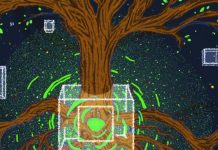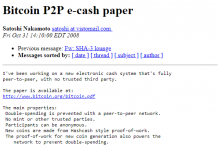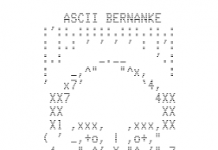NASA and other space agencies, such as the European Space Agency (ESA), are considering potential applications of blockchain technology to space missions and internal operations.
According to a NASA presentation titled “Bitcoin, Blockchains and Efficient Distributed Spacecraft Mission Control,” blockchain technology could have useful applications in distributed spacecraft missions involving multiple elements. Artificial intelligence (AI) and blockchain technologies could be further integrated to make space-based sensor networks more efficient and responsive.
In September 2017, NASA awarded a $333,000 grant to University of Akron (UA) Assistant Professor Jin Wei to research how to make space hardware smarter and more autonomous. The research program, titled “RNCP: A Resilient Networking and Computing Paradigm for NASA Space Exploration,” wants to improve the automation, environment awareness and intelligence of NASA space probes, which is an important requirement for deep space missions.
“The objective here is the application of blockchain and distributed intelligence to our space and ground network communication assets,” said Thomas Kacpura, advanced communications program manager at NASA’s Glenn Research Center. “If successful, the overall objective will be to incorporate Dr. Wei’s research in our overall portfolio to ultimately optimize our communication networks.”
ESA is also quietly researching innovative blockchain-powered solutions. Recently, the Agency has been investigating the applicability of blockchain technologies to key challenges for ESA’s space activities and administrative areas. A position paper titled “Distributed Ledger Technology: Leveraging Blockchain for ESA’s Success,” authored by trainee Torben David and senior coordinator Gianluigi Baldesi, offers a concise summary of blockchain technology and its main applications, and then goes on to list several potential applications to the Agency’s mission.
In particular, the paper mentions faster and more accurate payments, blockchain-based smart contracts applications to streamlining procurement, audit processes and record-keeping, data traceability and access rights, and voting and direct democracy.
It’s worth noting that the ESA paper focuses on blockchain technology applications to administrative processes but doesn’t address embedded blockchain technology for space hardware and software, which is covered by NASA’s RNCP. However, since ESA’s exploration of blockchain technology is just beginning, it seems likely that applications to space missions will be considered in due course.
In conversation with Bitcoin Magazine, Baldesi confirmed that the Agency is considering potential applications of blockchain technology with keen interest and a forward-looking approach. In the framework of “the Space 4.0 era” with diverse space actors around the world, including emerging private companies and citizen groups empowered by digital technologies, ESA launched the “Exploring Threats and Opportunities through Mega Trends in the Space 4.0 Era” initiative with the support of consulting firm Frost & Sullivan, and hosted a related workshop at the ESTEC technical centre in Noordwijk, the Netherlands, on October 23, 2017.
“In the era of Space 4.0 — as in our own lives — we have to be adaptive to change and nurture a culture of pro-activeness and open-mindedness to both disruption and opportunity,” said Baldesi.
The workshop was live-streamed and is now available for public viewing. Several presentations discuss blockchain technology as a key enabler of disruptive innovation in a wide range of industries, including space. Potential space applications of blockchain technology include mission data; smart contracts and smart procurement to optimize the supply chain; and information management where applications may include virtual spacecraft (traceability and configuration consistency) and configuration control (hardware and documentation).
Baldesi explained that the Agency is awarding exploratory research contracts related to blockchain technology, such as a Satcom Maker Space initiative that includes Internet of Things (IoT) solutions for satellite telecommunications and a “Testbed for Blockchain supporting satellite M2M/IoT,” as well as an intended “Blockchain for Space Activities” study and an intended “fintech” initiative for innovative fintech-related applications and services based on the integration of space and non-space technology.
The governance and “direct democracy” applications mentioned in the position paper are especially interesting. Baldesi explained that the current Director General of the Agency, Johann-Dietrich Wörner, known for his vigorous support of bold, visionary initiatives such as the “Moon Village,” is determined to systematically use tools such as Kahoot for crowdsourced decision making and has launched several pilot e-voting initiatives, not only internally but also with the participation of external actors.
Blockchain-based e-voting platforms are, according to Baldesi, especially promising and in line with the desired openness and inclusiveness of Space 4.0.



















